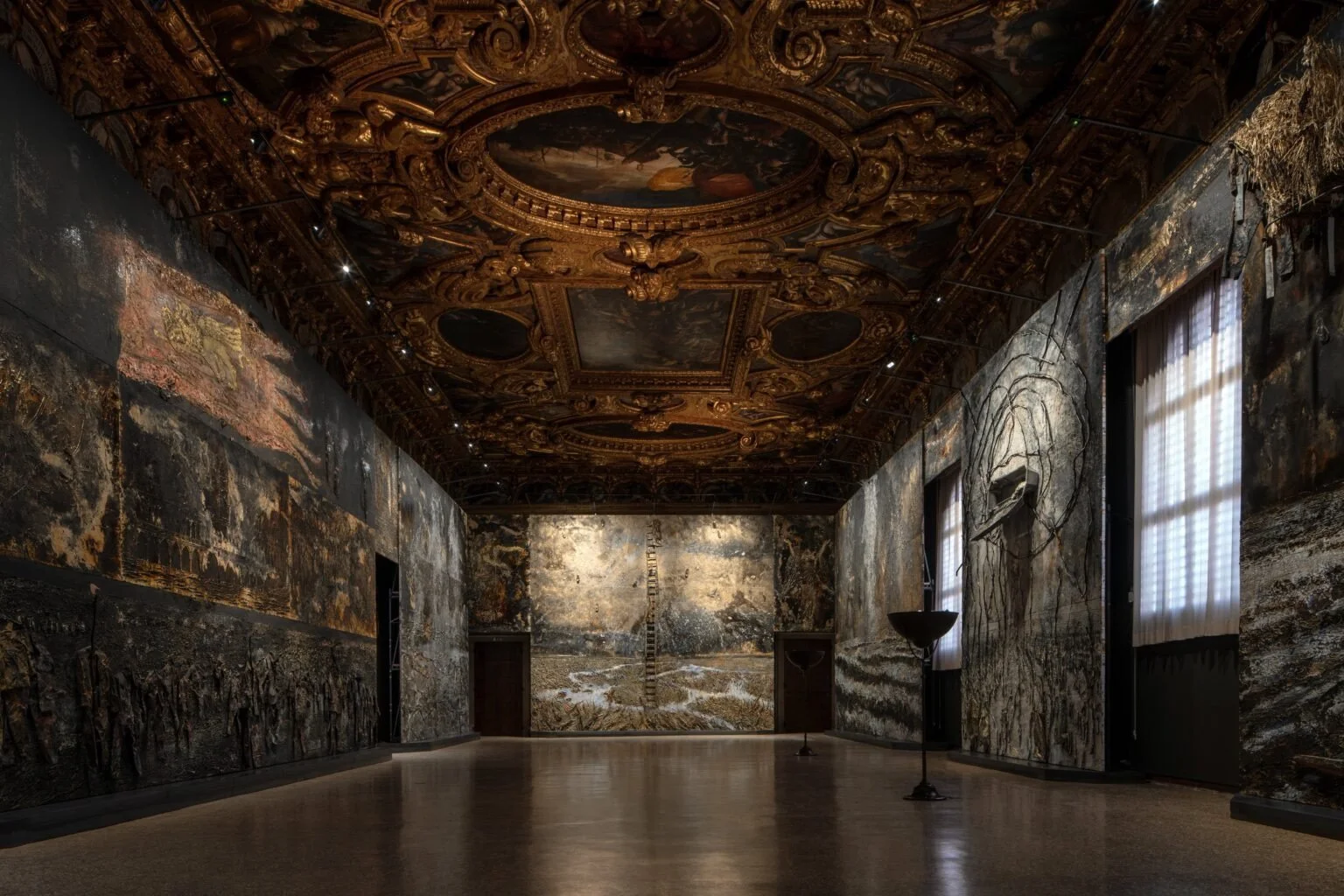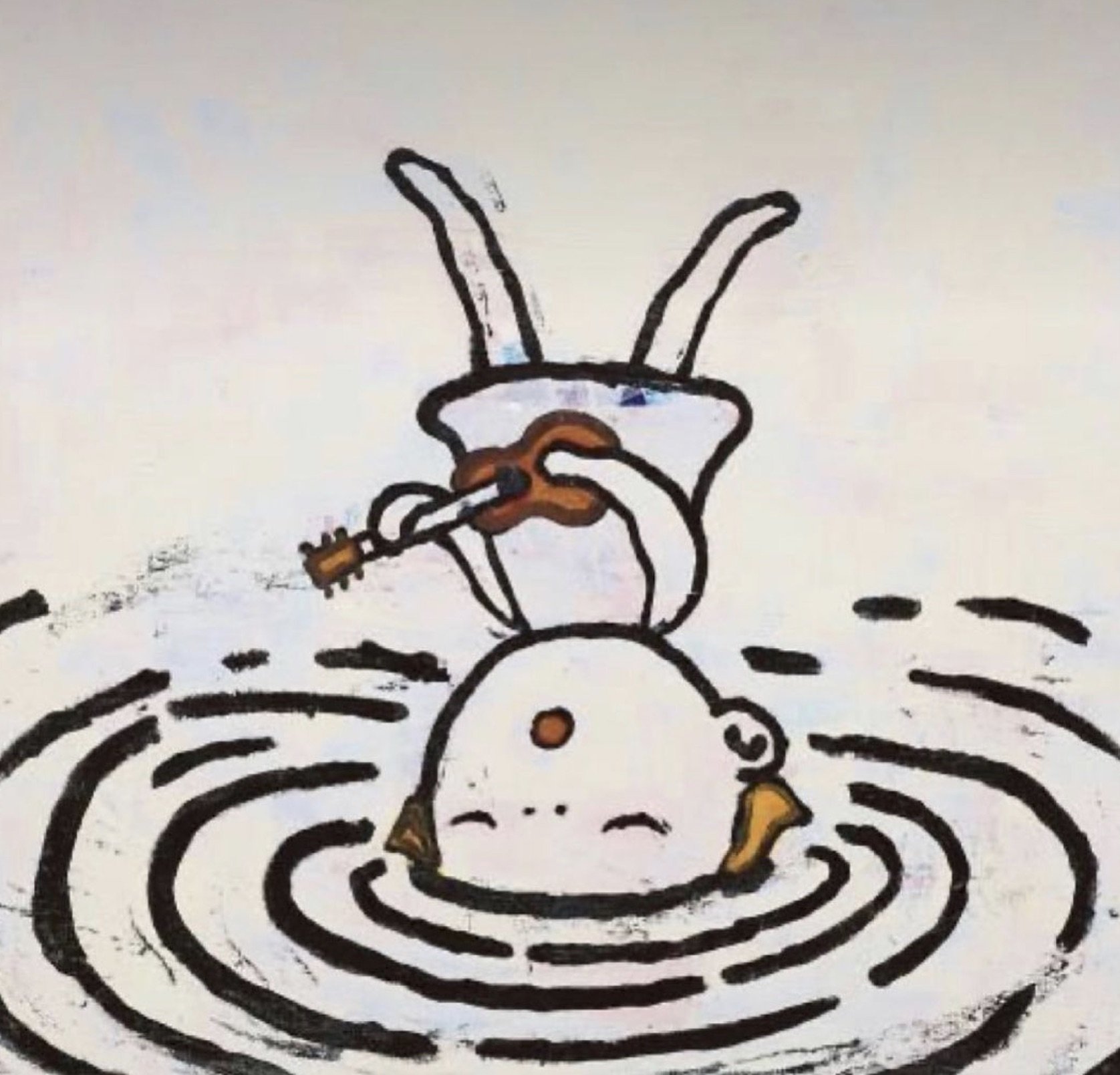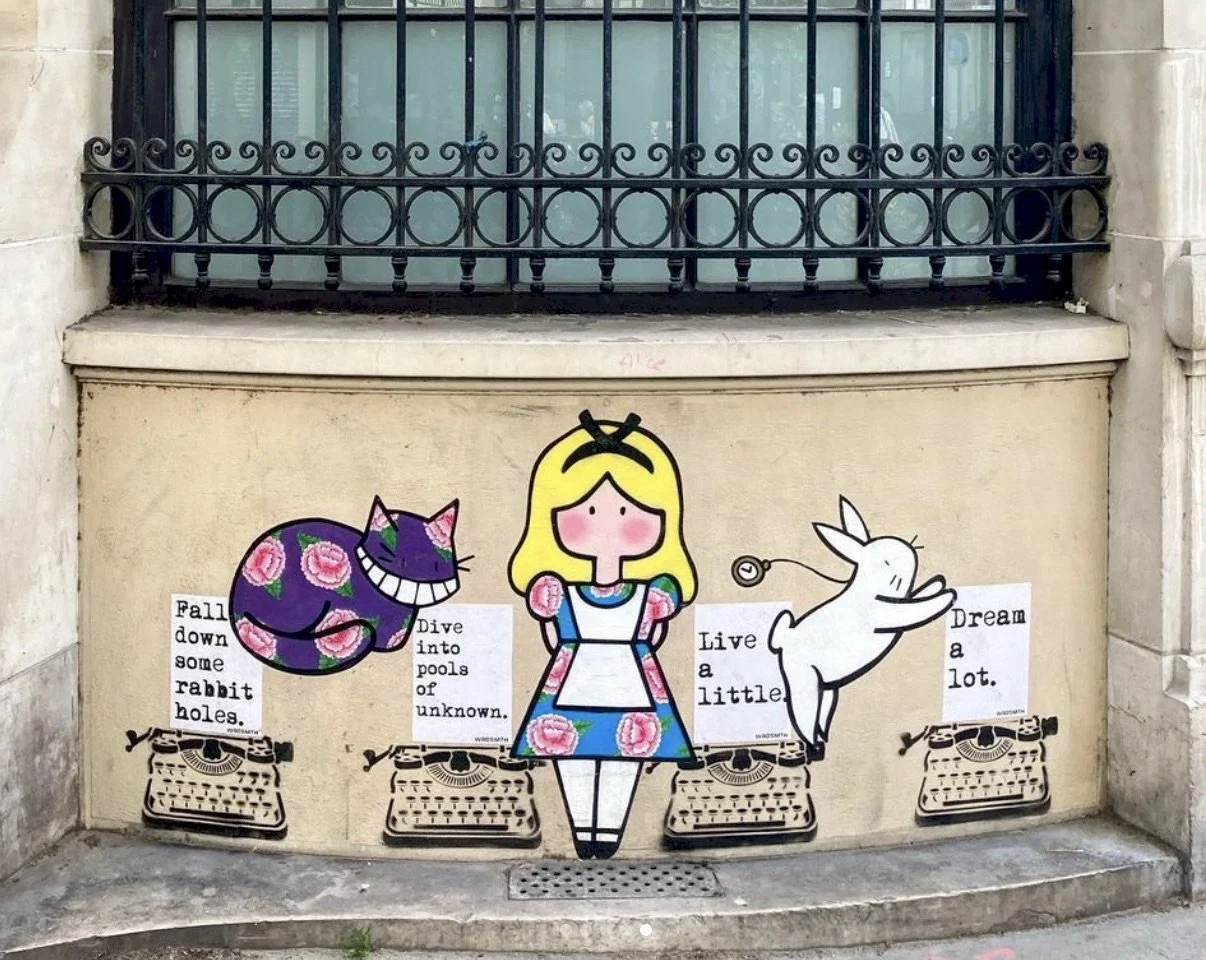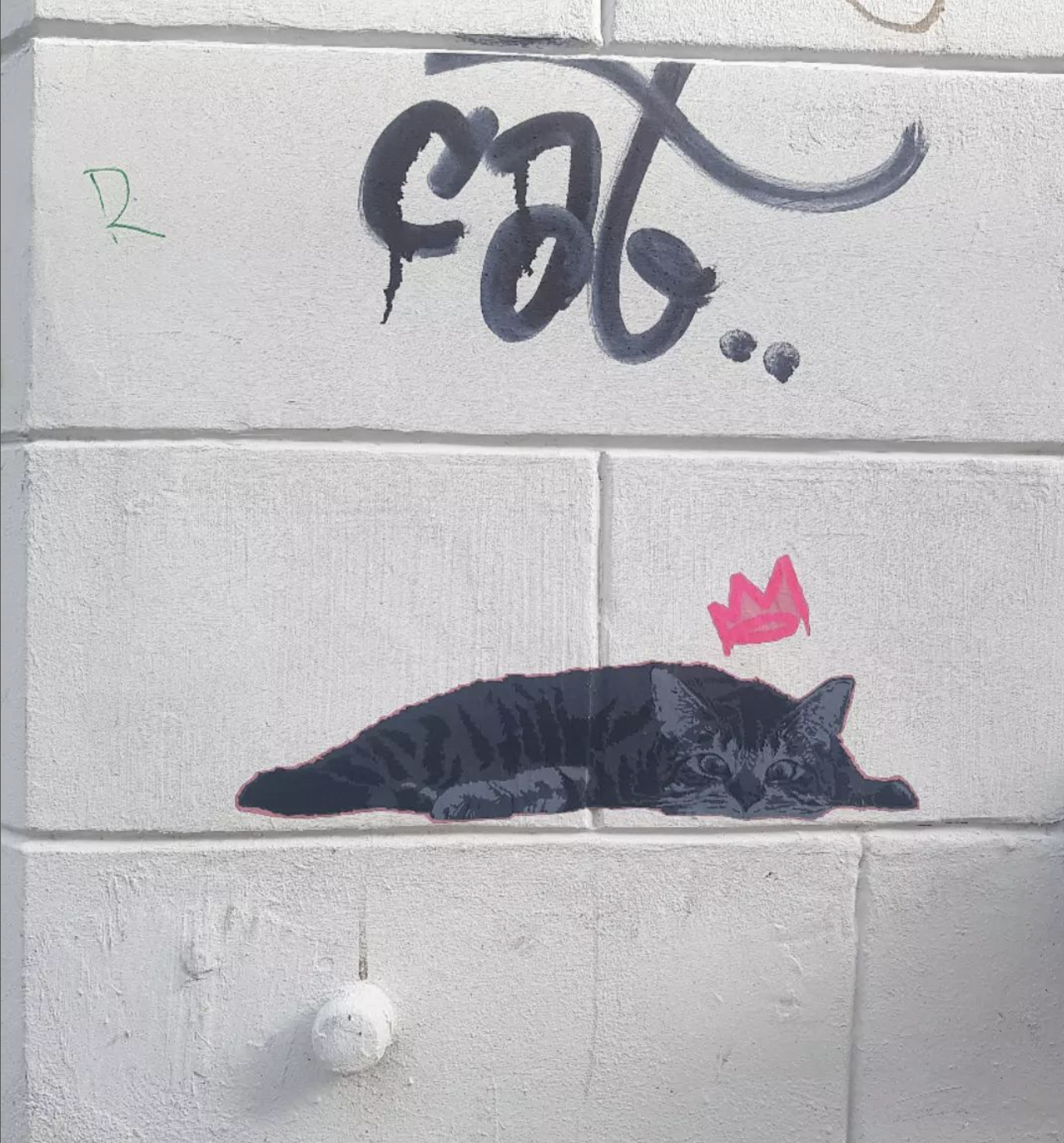Artwork: by @imagianryduck77, Israel, 2022
Whimsical artwork by @imaginaryduck77: “Another imaginary girl observing the world with her pet 😊”

Artwork: by @imagianryduck77, Israel, 2022
Whimsical artwork by @imaginaryduck77: “Another imaginary girl observing the world with her pet 😊”

Artwork: Anselm Kiefer, Questi scritti, quando verranno bruciati, daranno finalmente un po’ di luce (These writings, when burned, will finally cast a little light), Palazzo Ducale, Venice, 2022
In yet another wonderful satellite exhibition at the 59th Venice Biennale, Anselm Kiefer was commissioned to create a series of works for the Sala dello Scrutinio in the Palazzo Ducale (Doge’s Palace). It is a series commemorating the 1,600 anniversary of Venice, reflecting on its history, and the title is taken from the words of Venetian philosopher, Andrea Emo (1901-83), Questi scritti, quando verranno bruciati, daranno finalmente un po’ di luce (These writings, when burned, will finally cast a little light).

Artwork: Anselm Kiefer, Questi scritti, quando verranno bruciati, daranno finalmente un po’ di luce (These writings, when burned, will finally cast a little light), Palazzo Ducale, Venice, 2022
The paintings are full of fire and light—illumination; the earth and intimations of heaven; with references to burned books and sticks (charcoal), the written word, the passage of trade from East and West, the empty casket of the patron saint of St. Mark, to the fires of 1577 that damaged the palace located in the Piazza San Marco. Fire is synonymous with destruction and creation; the cycle of life, death and rebirth; a process of transformation and illumination as the title of the exhibition suggests. Kiefer’s paintings also speak to the artistic history of Venice, his own work temporarily affixed over frescoes created by Tintoretto and Jacobo Palma the Younger, such that the past and present, memory and history are layered, a complex tapestry of time, erasure, remembering and forgetting.

Artwork: mural, Rabbit Hole, by @seth_globapainter, 2022
Brilliant mural by @seth_globepainter—follow the white rabbit down that rabbit hole…🐇

Artwork: Urs Fischer, Sotatsu, 2018
My heart
is the sky.
Your’e free
within it…
© Angela Jooste

Artwork: Installation by Luzinterruptus, The plastic we live with, Suzhou Grand Canal, China, 2022
Figuring out what’s fake or real these days is challenging. Having done my own research (hint—follow the money and people/corporations behind news, agendas and causes that will profit or gain something from their support) a “real” environmental problem is plastic pollution.
The most recent public intervention in China by the anonymous artistic group from Spain, Luzinterruptus, highlights this issue (I also wrote another post on a similar theme regarding their work, Plastic Waste Labyrinth). The installation is called The plastic we live with, and was created for the I Paint Suzhou Festival in China. The signature features of the installation include their use of raw materials—plastic bags—and light, which literally sheds light on the issue of the prevalence of plastic waste that we live with today. And it raises the question: What are we going to do about it?

Stranger Things 4 was recently released and I devoured it and feel pretty pissed at having to wait until July for the last 2 episodes. However the series is a huge fave of mine so I’ll suck it up, and I was hooked from the start of this season that wasted no time diving back into the Upside Down, getting gory and dark real quick. There’s always the balance of humour and goofiness, but the gang from Hawkins and their allies are facing straight-up evil off the bat.
Stranger Things is a classic story of dark and light, and how extraordinary powers can be used for evil or good. It’s a story of friendship and change, and the willingness to embrace imagination in order to confront true darkness and what seems improbable. It’s also about the need for a moral compass that allows the distinction between right action and those actions that can do harm to others, and how skewed that gets in the hands of people devoid of empathy and who cross lines to use and abuse exceptional power. And it’s a story about love and the kind of bravery that means you’ll go to any lengths to help those you care about it. I loved the series from the beginning and this season evolves wonderfully in unexpected ways.
And Eleven is still a brilliant, badass hero.

It’s a bizzaro upside down kind of world right now…

Make Orwell Fiction Again…Kind of perfect seeing this on my way to vote in the federal election today 😝

Artwork: Ugo Rondinone, burn shine fly, Venice, 2022
Another great satellite exhibition featured alongside the 59th Venice Biennale is New York based artist Ugo Rondinone’s burn shine fly at the Scuola Grande San Giovanni Evangelista. What is truly magical are the cloud/sky body sculptures falling/flying from the ceiling of the nave of the church. They are life-sized casts of dancers. In the context of a sacred space, it is akin to bringing the heavens that much closer to earth and humanity, as well as the merging of the human body with the elements of air and water. Beings of the heavens, but also of this world.
Rondinone said this about the project:
“The sculptures in ‘burn shine fly’ aims to engender an altogether contemporary version of the sublime, one in which the smallest candle sculpture is of no less consequence than the overarching totality of the sun sculpture or the stellar marriage of the earthbound body with the waterfilled sky. The work should dazzle us and send us into a deep reflection about the marvels and mysteries of life.”

Artwork: by @wrdsmth and @ami_imaginaire_streetart
Currently reading Alice in Wonderland—the last two years feels like one long fall down a rabbit hole—so this “wonderful” collaboration between @wrdsmth and @ami_imaginaire_streetart seems pretty appropriate.

Walking around the city on Friday and spied this worn-out paste-up…please be awesome. Made me smile. 😊

Artwork: Kelly Akashi, Vesica Piscis, 2022
Kelly Akashi’s art is exquisite, and it’s wonderful to see it currently showcased in an exhibition in Venice at the newly opened Barbati Gallery titled Life Forms. I’ve written two art stories on her work, and the pieces featured in this exhibition express much of what fascinates me about her art: the passage and ephemerality of time; the use of alchemical processes such as glass blowing and wax casting; the transformation of materials and forms; the melding of human, plant and animal worlds; the insertion of her own body, often hands, symbolising the act of creation and the continual creating of the self through this very act; a tension between fragility and a sense of loss, and ultimately the mysterious and intangible quality of her artwork.
Francis Alÿs Children’s Game #20: Leapfrog Nerkzlia, Iraq, 2018; 5:53 min; in collaboration with Ivan Boccara, Julien Devaux, and Félix Blume
The 59th Venice Biennale opened to the public yesterday curated around the main theme: The Milk of Dreams. Having been to the Biennale it’s quite overwhelming: what to see, focus on, navigating crowds, the various pavilions, satellite exhibitions and different locations, especially if you’re under a tight time schedule. But if I were going this year I’d make a beeline for the Belgium Pavilion and Francis Alÿs’s exhibition The Nature of the Game.
Since 1999 Alÿs, who was born in Antwerp but lives in Mexico, has been documenting children’s games, beginning with Children’s Game #1: Caracoles, showing a young boy kicking a bottle up a steep street, only to let it roll back to him and then kicking it up again. The current exhibition features a video from 2017—as well as more recent works—Children’s Games #19: Haram Soccer, where young boys play a game that is banned in areas controlled by the Islamic State. Alÿs created this video while he was embedded in the Kurdish Army for nine days on the front lines of Mosul, and he had this to say of the experience: “There is something peculiar about the times we live in, and with them, a different expectation of the artist’s role. When the structure of a society collapses, when politicians and media have lost credit and terror invades daily life, society turns toward culture in pursuit of answers.”
Through documenting how kids play from various countries in the world, Alÿs’s poetic and politically incisive work explores how human’s live: adapting to limited resources and adverse conditions, showcasing amazing ingenuity, cultural traditions, cooperation as well as competition, and the simple joy at playing the game, of being alive in the present.

Artwork: Stencil by @liz_art_berlin, Hamburg, 2022
Kind of feel like this little guy today (without the crown)…by @liz_art_berlin.

I love returning to the Harry Potter universe, and the recent release Fantastic Beasts: The Secrets of Dumbledore did not disappoint. These movies are prequels to the Harry Potter books, centred on the magic zoologist Newt Scamander, an awkward, loveable and highly talented wizard, more comfortable with all manner of creatures than people. The war of dark and light, good and evil is central, as is the belief of certain wizards/witches of their superiority to the muggles (humans), and their desire to end them or enslave them. And the quandary to do what is right rather than easy, to keep trying despite failure or past ill deeds—this is always a choice when faced with the forked path of horrible destruction or a better world. What is so poignant and wonderful in this film is the potential for hope, that good can, and sometimes does, prevail.

Artwork: Anselm Kiefer, Paul Celan: du rollst die Altäre zeiteinwärts, 2021
Before becoming an artist Anselm Kiefer wanted to be a poet. Later he spoke of his art saying: “I’m a storyteller with a broken story.” Not a poet, but a storyteller whose paintings vacillate between creation and destruction; memory and history and its constant reconstruction; storytelling as an alchemical and poetic process, grafting the material and spiritual in a tense, often doubt-ridden dialogue, where answers to the questions of our humanity, purpose and relationship with the universe can never truly be resolved.
Kiefer’s recent exhibition at Thaddaeus Ropac Gallery in Paris titled Hommage à un poète, is not so much a tribute to the poets who have influenced his art throughout his career, so much as speaking to an intricate connection that poetry has woven through his work: the words of poets shaping, materialising and inspiring the images Kiefer creates. One of his most devastating testaments to the Holocaust and Germany’s Nazi past is the painting Sulamith (1983, not featured in the exhibition), its title and subject inextricably tied to Paul Celan’s poem, Deathfugue (1945). The painting is of a cavernous tomb-like arched chamber (a stark and harrowing reference to the gas chambers), with a fire burning at an altar and the bricks smeared with ash bearing the name “Sulamith” scrawled in the top left corner. “Sulamith” refers to “Shulammite” which comes from the Hebrew “shulammit” meaning “woman of Jerusalem” (characterised as King Solomon’s beloved in the Bible’s Song of Solomon), and which figures in Celan’s poem, “Your ashen hair Shulamith we shovel a grave in the air there you won’t lie too cramped”.
Poetry is powerfully entwined in Kiefer’s art and in this exhibition his work speaks to four poets: Paul Celan, Ingeborg Bachmann, Osip Mandelstam and August Graf von Platen. Recently Kiefer spoke about his relationship to these poets saying:
“For some time now, I’ve been doing exhibitions dedicated to poets. And I like doing that very much because I’m in constant contact with these poets, who are here now. I have a relationship with them. I call on them. I ask them for a critique when I’ve painted something. And so it’s not so much that I quote them, but rather I live with them. And talk to them. I believe that everything we see—you for example—what we see is illusion. It is not reality. The only thing that is real for me is poetry. A poem which is so condensed, which is written so precisely that it becomes reality. Normally I make a painting and at some point in the course of the process, of its completion, a verse from a poem suddenly comes into my head, which then belongs there. The theme here is language, language that is like a knife. Like a sword, that separates things, that highlights things. All three poets—Madelstam, Bachman, Celan, and others, of course—suffered under totalitarianism, under mass persecution. I think every poet who pushes to the very end comes to the unspeakable. Because the Real, the mystery, cannot be voiced. That’s why every poet comes to the point where it results in a blind spot, because he can no longer say what he really wants to say. Why is the world, why are people, built in such a way that they behave so impossibly, that they behave so terribly? The question is how one can now transfer what appears in Celan’s poems as a ‘blind spot’, what cannot be said, where he destroys the language: how one can transfer that into the image, that is then the question. And I do that through my own means, so that I believe or hope that the images are a parallel to the abstract poems.”
Hunros Jorna is a mesmerising short film set along the west coast of Ireland (Eire) by Allan Wilson and Mickey Smith, featuring the voice of Gwenno Saunders speaking in Cornish (Kernow; translated into English). Poetic and wild, this experimental film is an unexpected and bewitching adventure created from a deep love of the sea. As Mickey Smith said: "We wanted to pay tribute to the heartbeats, land and seascapes that have inspired and given our lives so much meaning. Try and do justice to their spirit by opening up the magic of Kernewek through our stories."

Artwork: Mural by Millo, Love Runs the World, Kyiv, Ukraine, 2016
Wonderful mural by artist Millo (@_millo_), “a message of peace” titled Love Runs the World for the Mural Social Club Festival in Kyiv, Ukraine, 2016.

Enough said. ☮️
The beauty of musician and artist Ryoji Ikeda’s installations is the approach of cosmic and intangible experiences through simple yet profound means. Ikeda’s artworks exploring the Planck scale, supersymmetry, or the transinfinite span the infinitesimal to the astronomical through the elegant incorporation of sound, light, space and time. Ikeda commented: “My work is created by reducing sound, light and the world into sine waves, pixels and data…so that the world can be viewed once more at a different resolution”
Point of No Return (2018) is the exploration of the event horizon of a black hole using basic shapes, sounds, light and shadow. The strobe effect is mesmerising, sucking the viewer into the work like the dense gravitational pull of the black hole itself, and the sensory overload is resonant of experiencing an immensity beyond absolute comprehension.
Check out the video where Ikeda talks about the installation.